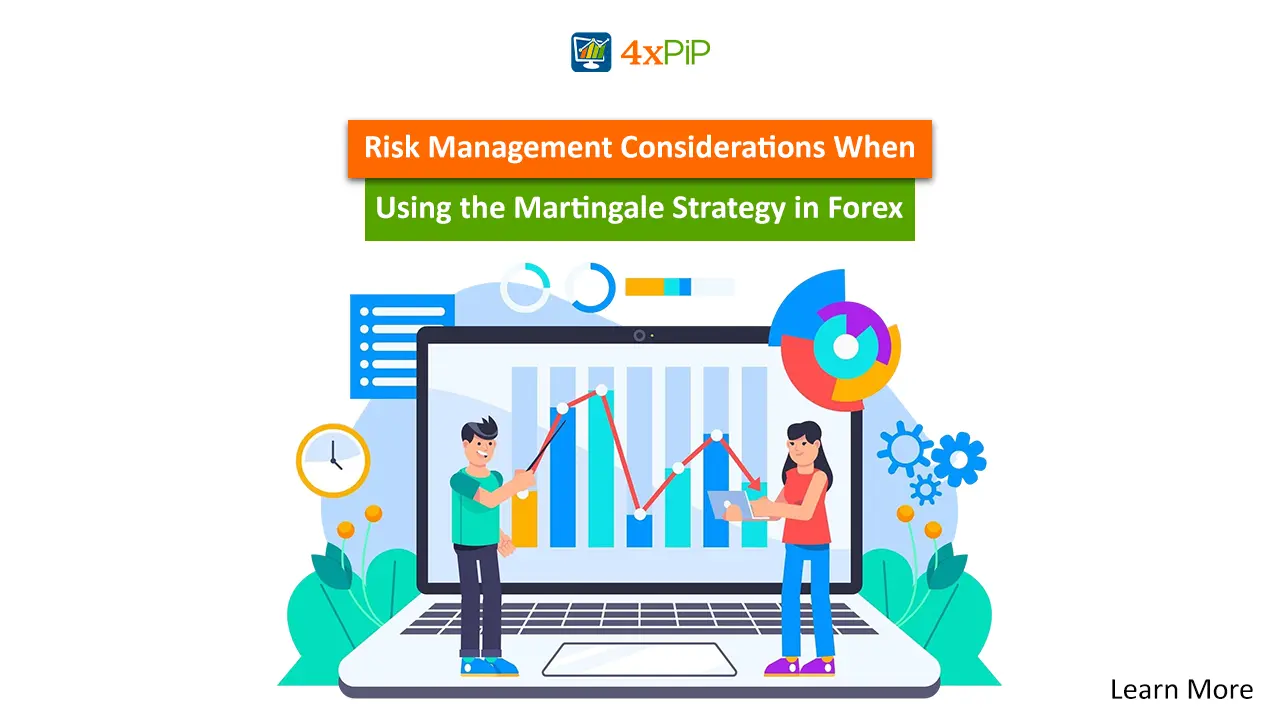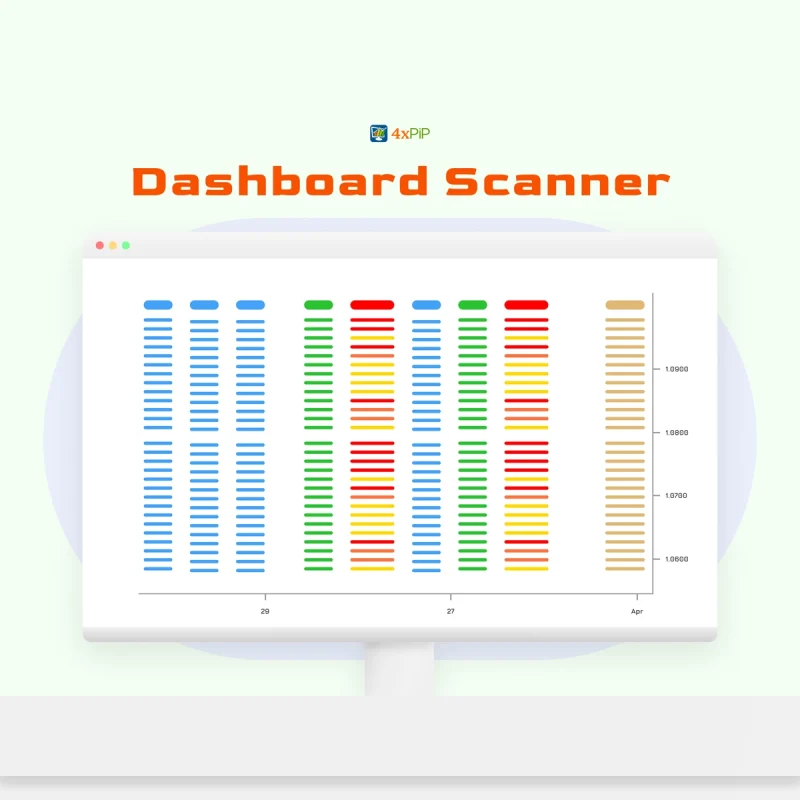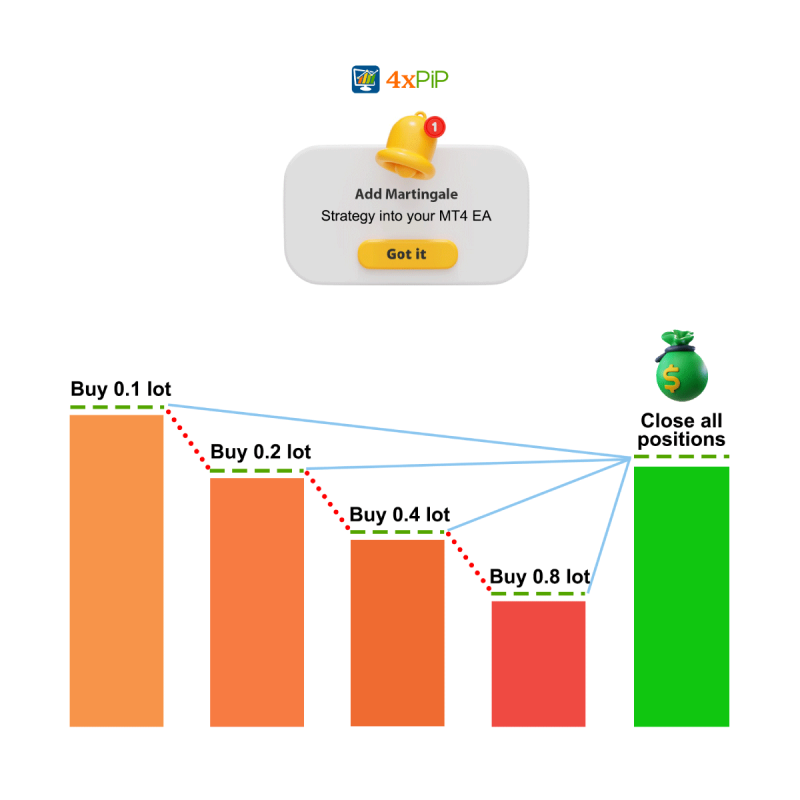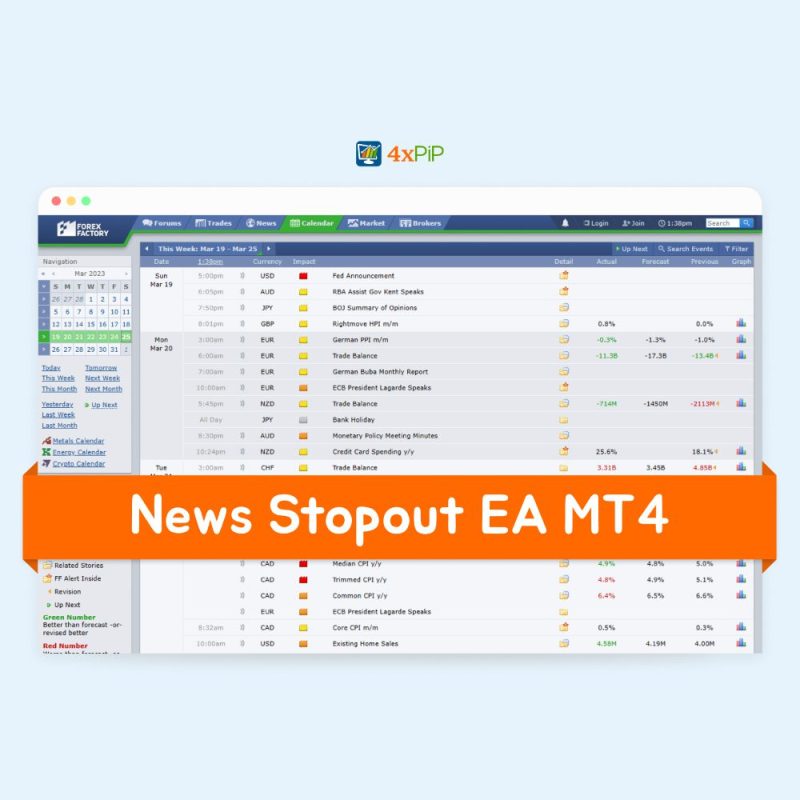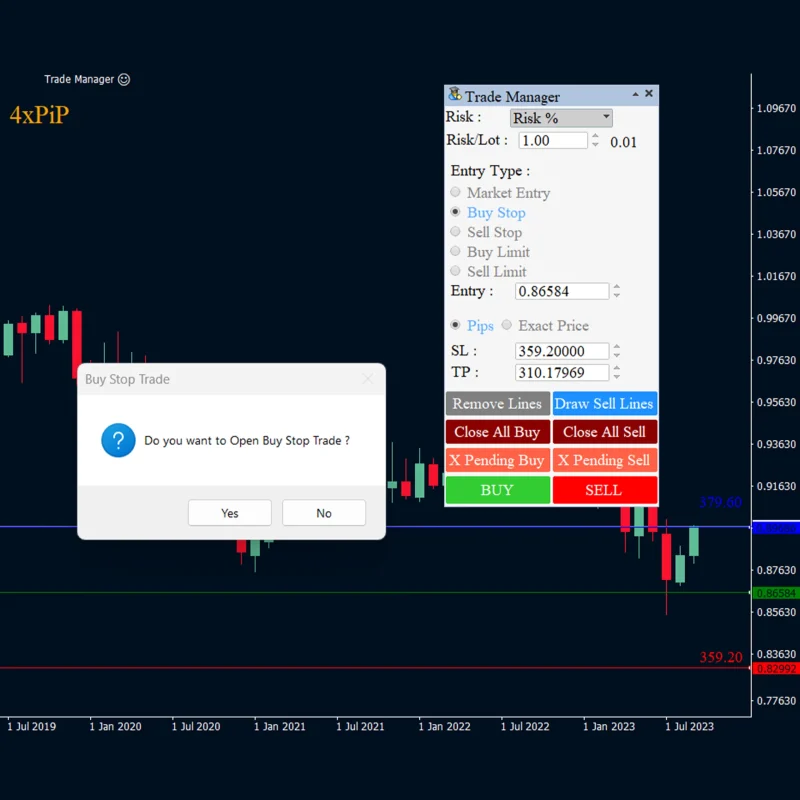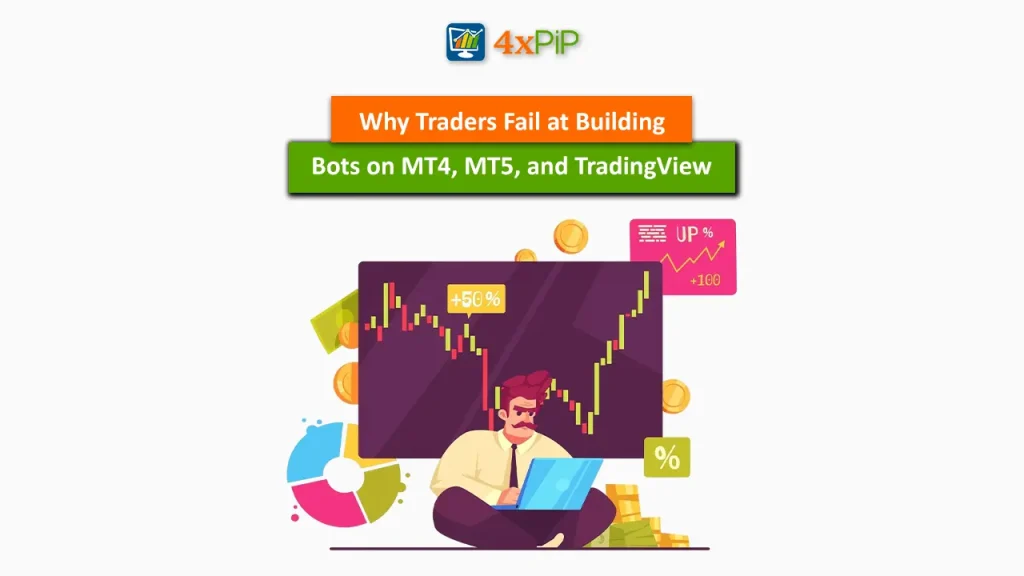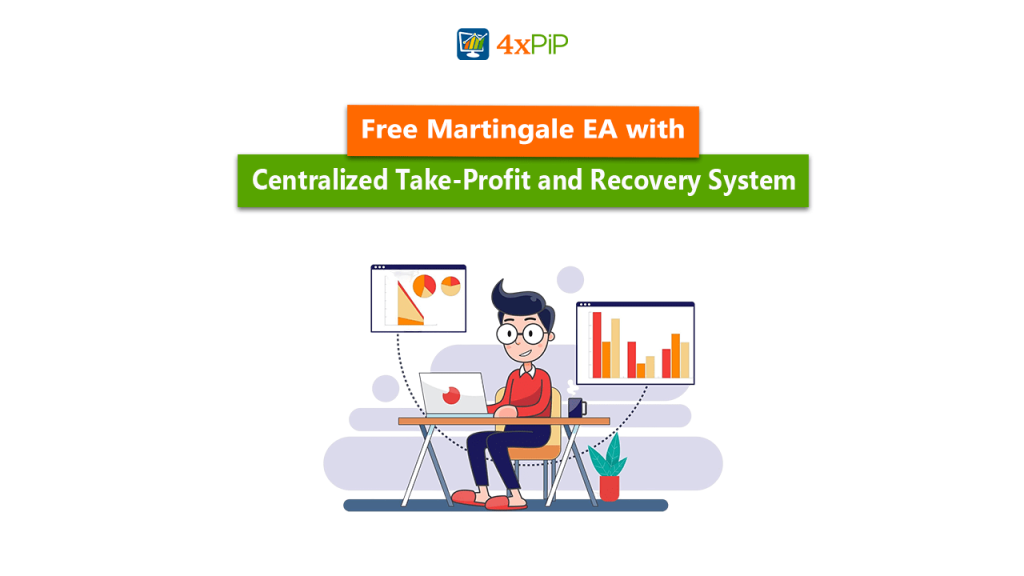The Martingale strategy in Forex involves increasing trade size after each losing position, aiming to recover previous losses once the market retraces. Traders use it because it lowers the average entry price and allows multiple positions to close together at a net profit using a centralized take-profit mechanism. However, scaling positions also means scaling exposure. Each additional order increases margin usage, drawdown risk, and vulnerability to stop-out events if the account cannot support ongoing trades. This is why disciplined risk management is not just recommended, it is fundamental for anyone applying Martingale in live markets.
To approach this method responsibly, define key parameters before execution: the initial lot size, martingale multiplier, grid spacing (steps), and maximum number of martingale orders allowed. A smaller starting lot and wider grid spacing generally reduce stress on the account, while a clear maximum order limit prevents runaway position stacking. Consider using the Forex Martingale EA to manage these variables efficiently.
How the Martingale Strategy Affects Account Exposure
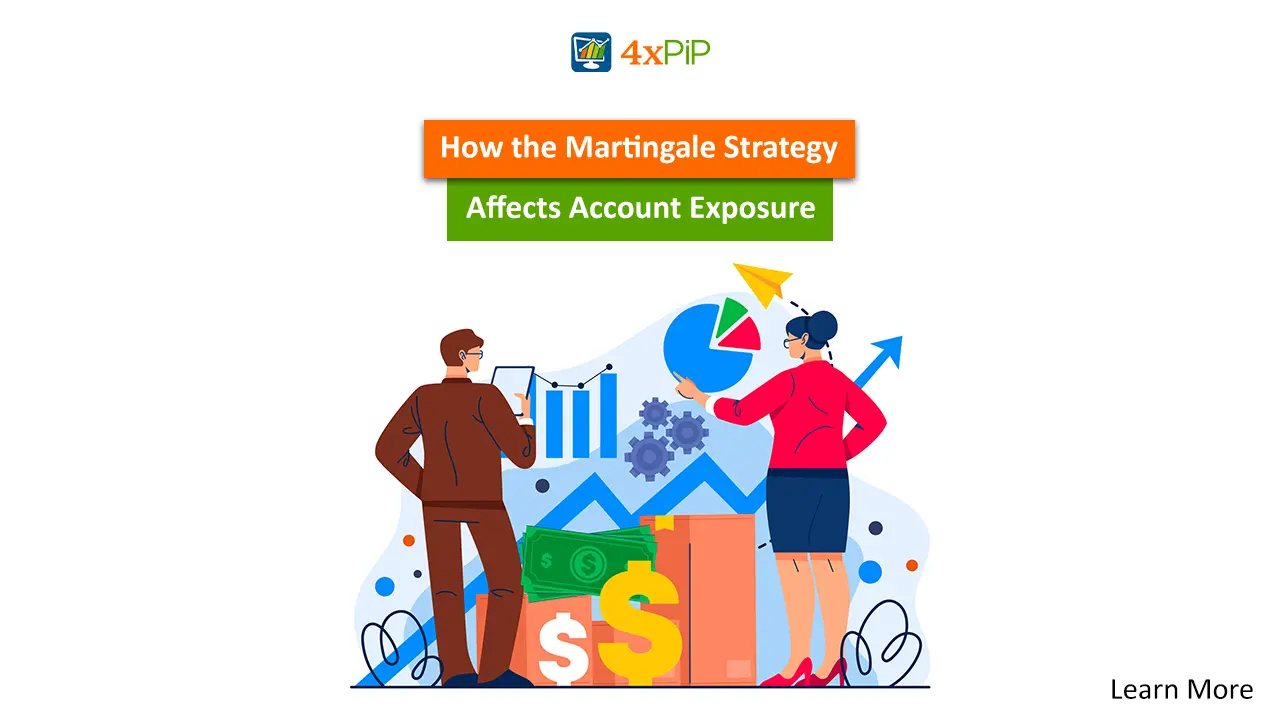
When using the Martingale approach, each time a trade moves into drawdown, the next order is opened with a larger lot size. Because this increase is based on multiplication rather than addition, exposure grows exponentially, not linearly. For example, starting with 0.10 lots and using a multiplier of 2 results in 0.10 → 0.20 → 0.40 → 0.80, and so on. Even a short sequence of unfavorable price movement can create a large combined position. This directly affects available free margin, as each new trade requires more margin to stay open. If the account cannot support this growing margin requirement, the platform may issue a margin call or force liquidation long before the market reverses.
To manage this effectively, the trader must define the maximum number of martingale orders and adjust the lot multiplier and distance (steps) between entries. In Martingale strategy Forex trading, this spacing is important because it controls how fast exposure compounds. To get started practically, install the 4xPip Best Martingale Strategy Forex EA on MetaTrader, set your initial lot size, choose whether to use a lot multiplier or lot increment, and specify the martingale distance based on your timeframe. Then, define a stop-out percentage to establish a safety threshold. This creates a ceiling on risk, ensuring exposure increases only within limits the account can support.
Evaluating Margin Levels and Margin Utilization
In leveraged trading, margin requirement is the amount of capital locked to maintain open positions, while free margin represents the remaining usable balance available to support new trades or absorb drawdowns. In Martingale strategy Forex trading, each additional order increases the total lot size, which raises the margin requirement. As exposure expands, free margin begins to shrink; if it drops too low, the account may approach a margin call or stop-out, even if the market only needs a small retracement to return to profit. The key is to monitor the account’s margin level closely and maintain a buffer instead of letting it compress to a dangerous threshold.
To manage this safely using 4xPip, start by installing the Best Martingale Strategy Forex EA on MetaTrader (MT4). Set a small initial lot size, then configure the lot multiplier and Martingale distance (steps) according to your trading timeframe. Next, define Max Martingale Orders to cap how far the sequence can extend, and set a stop-out percentage to automatically halt operations if free margin becomes limited. The EA displays the total number of open trades and their combined profit on the chart, helping you actively gauge margin utilization as positions build. With these inputs adjusted, you can scale the strategy in a controlled way, rather than allowing compounded orders to pressure the account unchecked. The Martingale EA allows lot multiplier, centralized takeprofit, and stop-out percentage adjustments so traders can align risk with capital.
The Role of Leverage in Amplifying Both Risk and Opportunity
Leverage determines how much capital is required to open a trade, and in a Martingale environment, it directly influences how quickly exposure scales. Higher leverage lowers margin requirement per trade, meaning more positions can open with a smaller account balance. However, when additional Martingale orders are triggered during a drawdown, each larger lot consumes more free margin. This causes account vulnerability to increase rapidly, especially in extended trending markets where price does not retrace immediately.
When comparing leverage levels, moderate leverage (e.g., 1:50–1:200) provides more stability because free margin declines slower as new Martingale orders open. High leverage (e.g., 1:500–1:2000) allows aggressive scaling, but drawdown escalates fast and margin call thresholds can be reached within just a few extra entries. The goal is not to avoid leverage, but to use it in a controlled range aligned with account size, grid spacing, and maximum allowed Martingale orders.
Key Considerations:
- Leverage reduces required margin per trade, allowing more positions to open.
- Higher leverage accelerates both profit recovery and drawdown severity.
- During losing sequences, lot size expansion + high leverage = rapid free margin depletion.
- Moderate leverage provides more buffer to withstand price swings before recovery.
- Align leverage with lot multiplier, martingale steps, and maximum number of active orders.
To configure leverage settings effectively using 4xPip’s Martingale Strategy Forex EA on MetaTrader (MT4), start with a small initial lot size, then adjust the lot multiplier and Martingale distance (steps) based on your preferred timeframe. If trading with higher leverage, reduce the Max Martingale Orders to prevent aggressive exposure buildup. The EA automatically manages counter trades, centralized takeprofit, and displays total open trades and profit on the chart, making it easier to see how leverage is affecting ongoing margin usage. By aligning leverage with these settings, we use the EA’s risk management features to support account stability instead of allowing leveraged expansion to run unchecked.
Stop-Out and Margin Call Risk in Prolonged Losing Sequences
Margin calls are triggered when the account equity drops below the broker’s maintenance margin requirement. In Martingale strategy Forex trading, losing sequences cause position sizes to expand rapidly due to the increasing lot multiplier. As more trades stack and the market continues moving against the initial entry, margin usage accelerates. This increases the probability of equity falling below required margin levels, leading the broker to halt trading ability. If the drawdown continues and equity declines further, a stop-out occurs, forcing the broker to automatically close positions to prevent the account from going negative. Sudden market volatility can compress this entire process into minutes.
In this context, working with a grid-based Martingale EA such as the one we offer at 4xPip helps users monitor and adjust martingale distance, max martingale trades, and stopout percentage to create a controlled safety threshold. The centralized takeprofit mechanism and recovery counter trades help reduce the pace at which margin pressure builds, but users still need to size initial lots conservatively. To begin, the user sets an initial lot size, chooses a martingale multiplier, and defines the maximum number of orders allowed during a losing sequence. This ensures that margin call and stop-out limits are aligned with account size before trades begin. In this way, the process stays transparent and manageable rather than reactive.
Risk-to-Reward Imbalance and Expected Value Considerations
In Martingale strategy Forex trading, the structure is designed so that many small wins occur frequently, while the losses, when they happen, are large and account-impacting. The lot multiplier increases exposure with each losing step, so the strategy relies heavily on eventually catching a reversal. Over time, however, market variance introduces streaks of price movement that exceed normal expectations. Because extended losing sequences are statistically inevitable, the long-term expected value of pure Martingale becomes negative when that single loss event outweighs the sum of previous small gains.
Using the Martingale EA from 4xPip helps users manage these expected value dynamics more transparently. When first installing the Bot / EA on MetaTrader (MT4/MT5), the user begins by setting the initial lot size, choosing a lot multiplier or lot increment mode, and defining the Martingale Orders limit to cap how far the losing sequence can progress. The centralized takeprofit adjusts based on the collective position group, helping close trades in profit whenever possible, but the key still lies in configuring parameters to avoid unrealistic exposure. The user simply loads the EA, opens the settings menu, adjusts the martingale distance and stopout percentage, and starts running it on their chart. This keeps the approach structured, monitored, and mathematically aligned with account size rather than emotionally driven.
Practical Risk Controls When Applying Martingale Variations
When applying Martingale strategy Forex trading, risk controls must be defined before any position is opened. A common approach is to set a maximum martingale order limit; once the sequence reaches that level, the system stops adding size, preventing exponential exposure. Reducing the lot multiplier or using lot increment instead of doubling can also slow drawdown during extended price movement. Some traders apply volatility or trend filters, so the Bot / EA only starts a sequence in calmer market conditions or aligns with dominant direction. Before live deployment, it is necessary to model worst-case drawdowns using both historical volatility and hypothetical extended streaks, to confirm that the account size can tolerate the sequence limit selected.
To set these controls correctly using our Martingale EA, the User simply installs the Bot / EA inside MetaTrader (MT4). After attaching it to the chart, the User opens the input settings and adjusts:
- Initial Lot Size (start point of exposure)
- Martingale Orders (maximum sequence limit)
- Lot Multiplier or Lot Increment (speed of scale-in)
- Steps (distance in pips/points between martingale trades)
- Stopout Percentage (safety threshold to prevent account wipeout)
The centralized takeprofit automatically adjusts to close the bucket of trades together in profit, and counter trades can be enabled to recover losses. Users can begin with a smaller initial lot and narrow steps on lower timeframes, or widen steps and reduce multipliers on higher volatility charts. Once settings are confirmed, the Bot / EA operates continuously until paused or removed, following the Strategy rules defined by the Trader / EA owner.
Summary
The Martingale strategy in Forex increases trade size after losses to allow a group of positions to close together in net profit once price retraces. While this can lower the average entry price and accelerate recovery, it also rapidly increases exposure, margin usage, and drawdown risk. Because position size expands exponentially, not linearly, traders must manage initial lot size, lot multiplier, grid spacing, leverage, and maximum sequence limits with care. Monitoring margin levels and defining clear stop-out thresholds is essential to prevent forced liquidation. Using 4xPip’s Martingale EA can help automate distance settings, centralized take-profit, and safety controls, making the method more manageable.
4xPip Email Address: [email protected]
4xPip Telegram: https://t.me/pip_4x
4xPip Whatsapp: https://api.whatsapp.com/send/?phone=18382131588
FAQs
- What is the primary idea behind the Martingale strategy in Forex?
It increases the lot size after a losing trade so that a later winning trade can recover previous losses and secure net profit. - Why does this strategy increase risk so quickly?
Because trade size grows exponentially with each step, resulting in rapid increases in exposure, drawdown, and margin usage. - What parameters are most important to set before running Martingale?
Initial lot size, lot multiplier, grid spacing (step distance), and maximum allowed Martingale orders should be defined before trading begins. - How does grid spacing affect performance?
Wider spacing reduces how fast trades accumulate, helping slow exposure growth, while tight spacing increases risk during trending markets. - Why is monitoring margin level essential when using Martingale?
As lot size increases, more margin is required. If free margin becomes too low, the account can face margin calls or forced stop-outs. - How does leverage influence Martingale outcomes?
Higher leverage allows more trades to open with less margin, but also accelerates drawdown during extended losing sequences. Moderate leverage generally adds more stability. - What causes margin calls and stop-outs in Martingale strategies?
A prolonged move against the initial position increases the total position size, consuming free margin until the account can no longer support open trades. - Why does Martingale often produce many small wins and occasional large losses?
The system is designed to recover losses once price retraces. But if the market trends too far, the expanding position can lead to a single large loss that outweighs prior gains. - Can using a Martingale EA make this strategy safer?
An EA can enforce rules such as maximum sequence length, step distance, and stop-out thresholds, helping maintain consistency and prevent uncontrolled position expansion. - What practical controls help reduce risk when using Martingale?
Setting a maximum number of trades, using a lower lot multiplier, applying volatility filters, and modeling worst-case drawdowns before going live all help maintain account stability.

